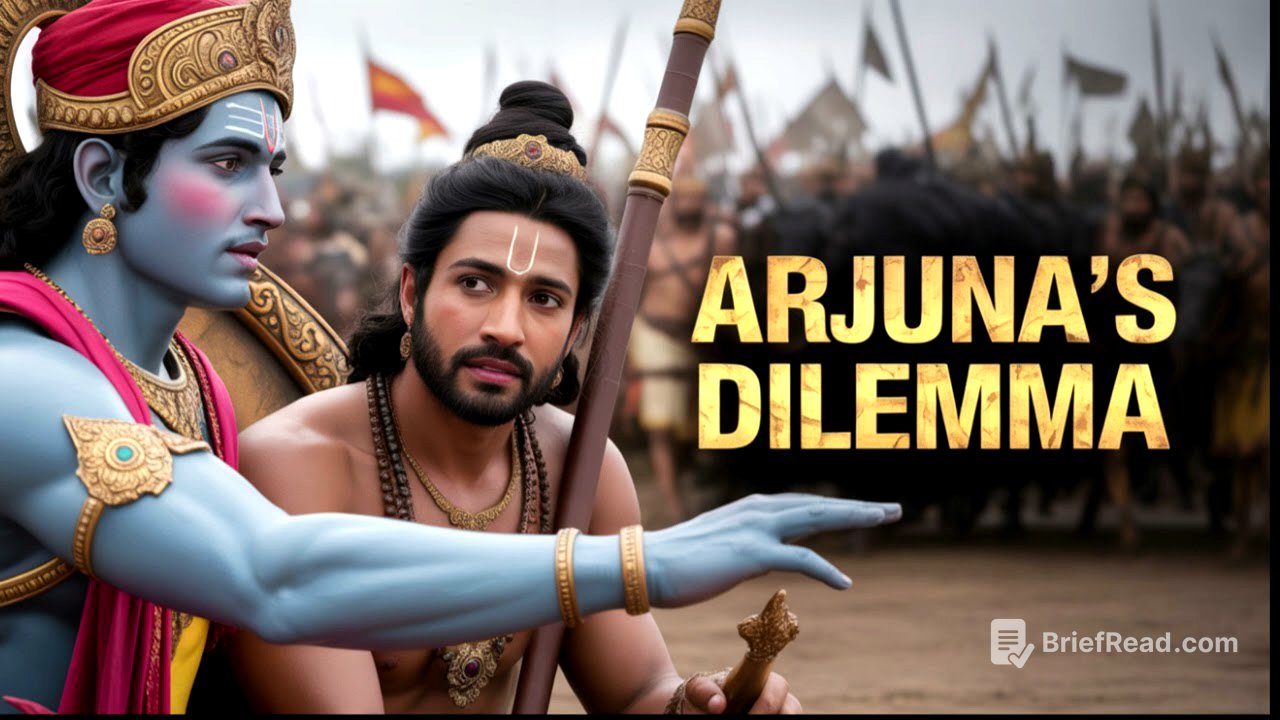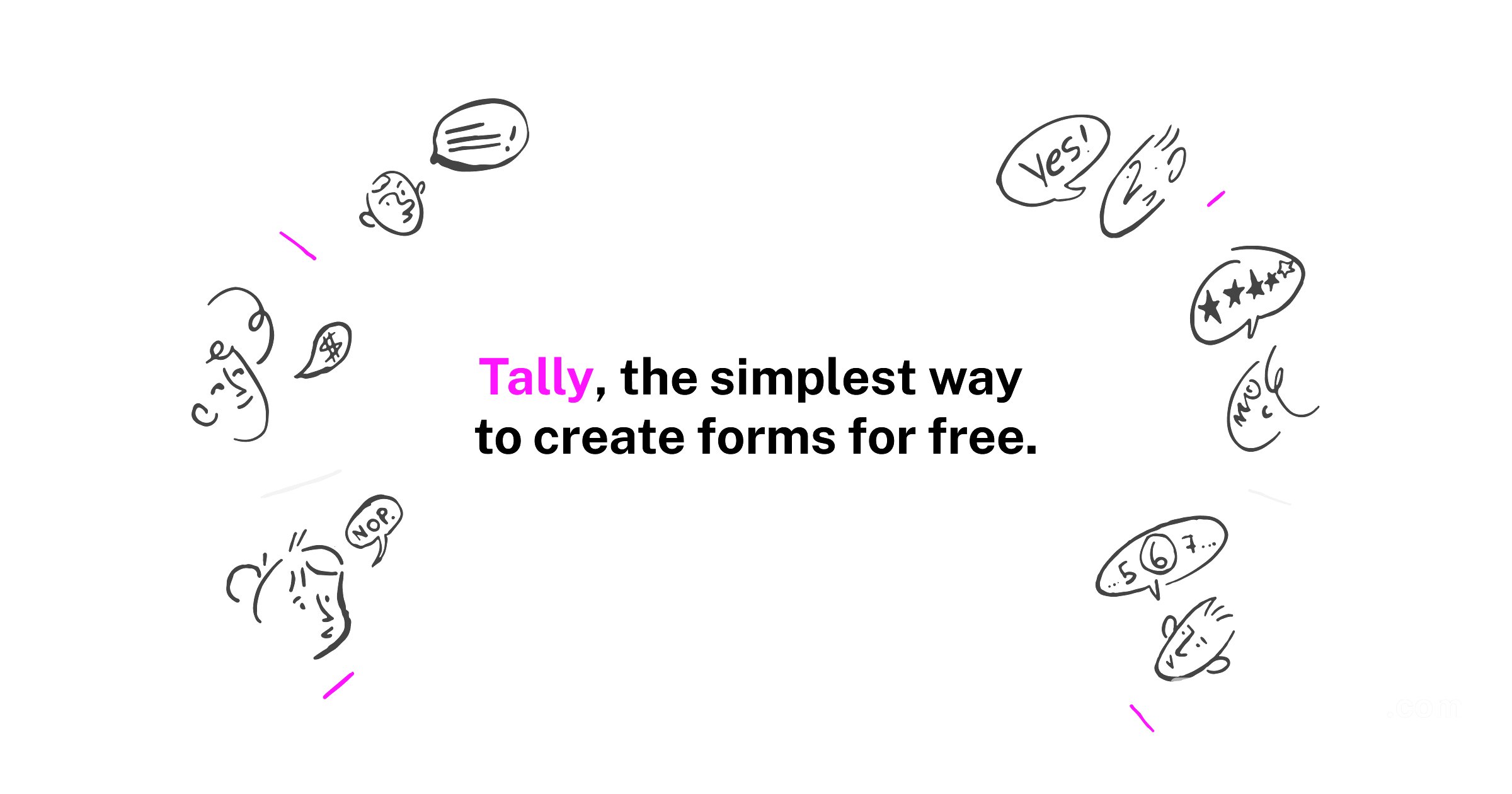TLDR;
Okay ji, so this video is all about understanding the Bhagavad Gita, not as a history lesson or self-help book, but as a guide to true happiness and freedom from suffering. The main points are:
- The Gita says real happiness is inside you, not in external things like money or success.
- It's not about literal war, but about the internal battles we all face.
- To really understand it, you need to be ready to change and see Krishna as God himself.
Intro: Unveiling the Essence of the Bhagavad Gita [0:00]
The video kicks off by pondering the universal human quest for happiness and escape from suffering. It introduces the Bhagavad Gita as a potentially misunderstood ancient text holding the key to these fundamental desires. The aim is to extract the Gita's core spiritual teachings and understand their relevance to modern life, viewing it as a journey of self-discovery with practical insights for approaching challenges and understanding happiness.
The Core Human Drive: Chasing Happiness and Avoiding Suffering [1:36]
The discussion centres around the ultimate goal of human existence, often described as God realization or manifesting inner divinity. While everyday goals revolve around career, family, and well-being, the underlying motivation is always the pursuit of happiness and avoidance of suffering. The common belief that happiness stems from external sources like wealth or relationships is challenged by the Gita, which posits that lasting happiness and freedom from suffering reside within oneself, connected to the unchanging reality of the Atman or universal consciousness.
Kama, Artha, Dharma: The Three External Pursuits [4:23]
The lecture breaks down external pursuits of happiness into three categories: Kama (pleasure, desire), Artha (wealth, power, status), and Dharma (morality, ethical conduct). While these pursuits drive everyday actions, the Gita suggests they ultimately fail to deliver true, permanent happiness and freedom from suffering. Spirituality begins with the realization that these external achievements leave one feeling incomplete, prompting a shift from the external world to the inner world.
Moksha Shastra: The Gita's True Focus on Liberation [7:03]
The Bhagavad Gita is identified as a "Moksha Shastra," a scripture focused on "Moksha" or liberation, a state of permanent happiness where suffering is completely eradicated. It clarifies that the Gita is not primarily a guide for worldly success or management, although it may contain useful advice for various aspects of life. Topics like diet and discipline are discussed only in the context of achieving Moksha, emphasizing that they are means to the ultimate goal of spiritual liberation.
Beyond the Battlefield: Understanding the Gita's Symbolism [8:57]
A common misunderstanding, especially in the West, is addressed: the idea that the Gita is about war. It's highlighted that historically, major figures and commentators have interpreted the battlefield symbolically, representing the battle of life and internal struggles. Mahatma Gandhi's use of the Gita for his philosophy of non-violence is cited as a contradiction to the war interpretation, which is often attributed to modern Western scholars projecting recent history onto the ancient text.
The Gita's Universal Message: Transcending Time and Place [11:22]
The video clarifies that the Gita isn't primarily about the specific story of the Mahabharata, but uses the epic as a vehicle for universal spiritual teachings applicable to our lives and inner battles. The Gita's main themes echo fundamental questions about maintaining focus on God and living spiritually in the world. It harmonizes the four paths of spiritual practice: Jnana Yoga (knowledge), Dhyana Yoga (meditation), Bhakti Yoga (devotion), and Karma Yoga (selfless action), offering a comprehensive and inclusive approach for every temperament.
The Essence of the Gita: Renunciation (Thiaga) [14:35]
The essence of the Gita is discussed through the story of Sri Ramakrishna, who pointed out that repeating "Gita" quickly sounds like "Thiaga," meaning renunciation. This doesn't mean abandoning the world, but an inner shift, renouncing attachment to results, ego, and fleeting pleasures, and turning inward for lasting peace. It's about internal detachment and aligning with something higher.
Approaching the Gita: Purpose and Divine Source [16:09]
The right mindset for studying the Gita is discussed, emphasizing the advice to keep two things in mind: the purpose (Priyaojanam) for studying it and recognizing the divine source of the teaching. The approach should be that of a genuine spiritual seeker wanting liberation from suffering, not an academic one. Remembering that the speaker is God himself (Bhagavan Krishna) gives the right attitude and openness to receive the teachings.
The Gita's Place in Vedanta: The Essence of the Vedas [18:41]
The Gita's special place within the tradition of Vedanta is explained, with Vedanta referring to the spiritual teachings in the Upanishads. The Gita contains the essential teachings of the Upanishads in a more accessible form, making it the go-to book for grasping the core of Hinduism or Vedanta. It's part of the Prasthana Trayam, the triple foundation of Vedanta, along with the Upanishads and Brahma Sutras, offering a comprehensive and practical spiritual user manual.
A Royal Road: The Gita's Comprehensive Spirituality [21:19]
The Gita is described as a "royal road" to spirituality due to its comprehensiveness, answering a wide range of questions about spiritual life. This is supported by its rich history of interpretation, with commentaries stretching back centuries from various viewpoints. The Gita is seen as the source from which different philosophical frameworks draw inspiration, supporting all of them in its depth and truth.
The Battlefield Beckons: Setting the Scene for the Gita's Teachings [24:33]
The scene is set on the battlefield of Kurukshetra, with Arjuna and Duryodhana seeking Krishna's help before the war. Arjuna's choice of Krishna over his army symbolizes choosing God and righteousness. King Dhritarashtra's spiritual blindness and Sanjaya's "TV vision" are introduced as narrative devices. Krishna drives Arjuna's chariot between the armies, forcing him to confront the reality of fighting his own family and teachers.
Arjuna's Despair: A Moment of Crisis and Confusion [27:23]
Arjuna is overwhelmed by the horror of the impending war, questioning the point of victory if it means killing his loved ones. He's caught in a conflict between duty and personal horror, leading him to drop his bow and declare, "I will not fight." Throughout this chapter, Krishna remains silent, allowing Arjuna to fully express his despair.
Krishna's Initial Response: A Call to Action [29:15]
Chapter 2 begins with Sanjaya describing Arjuna's grief, followed by Krishna's initial response, a practical pep talk urging Arjuna to shake off his weakness and stand up to take action. Krishna appeals to Arjuna's sense of duty and honor, reminding him of his strength and courage. This is not yet deep philosophy, but a motivational kickstart.
The Importance of Karpa: Reaching a State of Surrender [30:27]
Krishna's wisdom in not immediately offering deep philosophy is explained by the fact that Arjuna hasn't yet reached "Karpa," a state of true helplessness and surrender. It's only when we exhaust our own solutions and admit we don't know the way out that we become receptive to deeper guidance. Krishna waits for Arjuna to sincerely ask for help.
Receptivity is Key: Why Arjuna, Not Duryodhana? [31:44]
The question of why Krishna didn't teach Duryodhana is addressed, highlighting that Krishna did try to reason with him, but Duryodhana expressed no willingness to change. The key difference is receptivity. Arjuna reaches a point where he wants to understand and change, making him teachable.
Arise!: The First Step Towards Change [32:35]
The importance of Krishna's initial "arise" command is emphasized, with Swami Vivekananda teaching that unless you decide to take action to improve your life, no one can help you. Believing in your own capacity to change is the prerequisite. Deciding to stand up like Arjuna is an act of inner strength.
The Turning Point: Arjuna's Surrender and Krishna's Teachings [34:35]
Arjuna continues to argue his case, but the turning point comes when he explicitly surrenders to Krishna, asking for instruction on what is truly good for him. This moment of "Karpa" marks the beginning of Krishna's profound teachings of Vedanta, which will be explored further in the next part.
Recap: Setting the Stage for the Gita's Wisdom [35:23]
The video concludes by recapping the journey, starting with the search for happiness and the Gita's suggestion to look within. It addresses misconceptions about the Gita and emphasizes the importance of readiness and acknowledging confusion before receiving its teachings. The Gita's message is about the internal war within our minds and finding the strength to answer the call of our deeper self.

![[LIVE] Nebius Group (NBIS) Q2 Earnings Report & Conference Call](https://wm-img.halpindev.com/p-briefread_c-10_b-10/urlb/aHR0cDovL2ltZy55b3V0dWJlLmNvbS92aS90dm9oT1ZtaWxYby9ocWRlZmF1bHQuanBn.jpg)







